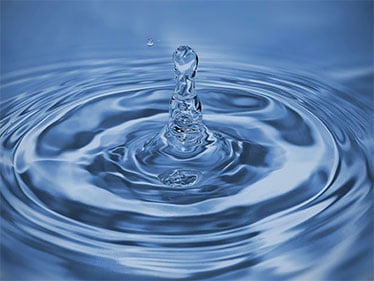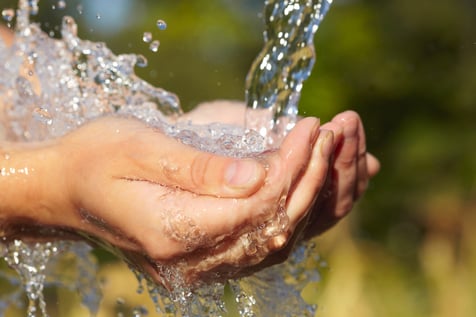Water Conservation Tips for Commercial Buildings
Why is water conservation important? Well, water isn't cheap. The U.S. Energy Information Administration estimates that large commercial buildings use around 22,000 gallons of water daily. That's about equal to the water in a large in-ground pool.
Commercial building owners and managers often strive to conserve water for financial and sustainability reasons, but that takes more than turning off the faucet after grabbing some tap water. You must know the root causes of water waste and understand your building's entire infrastructure. Only then can you implement effective water conservation methods.
If your heart rate spikes before checking your building's water meters, don't panic. There are many water conservation tips for industry professionals out there. You can implement several today and start saving on water utilities.
How To Assess Water Usage in Commercial Buildings
The starting line for assessing your water footprint is tallying daily usage numbers. In essence, you're performing a water sustainability audit. Start by reviewing monthly water bills or checking the meter. You can contact your water providers if you have questions or need clarification.
After getting the number, break it out for more insight. Start by dividing the gallons between the number of building occupants to get a per-person average. You can also monitor the meter day by day, creating a spreadsheet to track daily water usage trends.
However, it's essential to count the number of flow and flush fixtures you have in the building. Include any water-related appliances, like a clothes washer or irrigation system. After identifying all water outlets, record each device's flow rates, pressure, and efficiency rating. Flow rates and pressure are critical to tracking down waste. For a quick assessment, call a plumber to conduct the audit for you. Using a plumber is a great way to ensure nothing falls through the cracks.
Remember to count any external factors, such as the water level used for irrigation and landscaping. Outdoor watering often contributes significantly to total water usage. Try adding a layer of mulch to lock in moisture and save on these costs.
After meticulous evaluation, begin forming a strategy and setting goals for conserving water usage in your building.
Best Practices for Water Conservation in Commercial Buildings
Now you understand how to assess water usage. But what is water conservation as it relates to commercial buildings?
There are some unique factors to consider when eliminating water waste in commercial buildings. Below are some tips anyone can implement to start saving water, both short and long-term.
Regular Maintenance To Prevent Water Leaks
Water infrastructure is complicated and prone to malfunction. On average, just one leaky faucet wastes 3,000 gallons of water annually.
To stop leaks, examine all fixtures, pipes, and water-related appliances. It's vital to check routinely even if everything seems OK. You can't just take problems on as they appear.
Waiting to address problems means you'll only fix things once they're severe. You'll have higher maintenance bills, constantly waste water, and increase the risk of building damage. Excess moisture even endangers building occupants by creating an environment ripe for mold infestation.
Routine preventative maintenance handles problems before they occur. This approach saves thousands in utility costs and leads to fewer major maintenance projects.
As you tackle maintenance, install equipment with better sustainable flow rates and pressure levels. Conservation-oriented equipment results in longer-lasting infrastructure and lower utility bills, saving thousands over the long haul. For example, a low-flush toilet only uses about 1.6 gallons of water per flush compared to a standard toilet that uses 3.5 gallons. The same goes for shower heads and sink faucets. Lower water pressure results in less overall water waste. It also means less appliance wear and tear, so they'll last longer.
Educating Building Occupants
Anyone with kids knows those who aren't financially responsible for utilities tend to lack a conservationist mentality — but we're all guilty of this careless attitude. However, most people prefer to live a water-wise lifestyle once they know the stakes. All it takes is awareness.
Helping building occupants understand how to conserve their water supply is an effective way to reduce water loss immediately. Lead the conversation with specific numbers and actionable requests, and always emphasize that conservation is in their best interests.
Before demanding anything, explain what building management is doing to eliminate any waste of water. Then, provide guidelines and best practices, both in written and verbal form. For example, you can encourage employees to bring reusable bottles to work instead of using water fountains. Or you can even give out reusable bottles as a gift.
Lastly, always ask employees for their input. Many people feel passionately about conservation. Just ask. The initiative and creativity will surprise you.
Develop a Water Management Plan
Adhering to a clear plan is vital for success. First, appoint someone as the project head. From there, document the building's water system and usage, ensuring everything is mapped out and transparent. Then, identify any severe maintenance needs or immediate areas for improvement.
Account for every piece of relevant infrastructure. Once you know your building inside and out, roll out a series of practices and upgrades that creates a more efficient building.
Keep brainstorming ways to save. Below are just a few ideas to incorporate into water management plans:
- Update outdated fixtures or leaky faucets, toilets, urinals, and water heads
- Setup HVAC condensation collection
- Communicate routine updates and conservation-related news to occupants
- Identify areas for water reuse: rainwater harvesting, landscape return flows, wastewater recycling
The Importance of Implementing Water-Saving Technologies
Building owners can't afford to ignore water conservation efforts, but getting started can feel overwhelming.
Investing in water conservation technology is an excellent start for simple and effective solutions. Whether it's tech like low-pressure faucets or shower regulators, toilet tank cycle diverters, or smart irrigation, there are already tech solutions ready to save you hundreds of gallons of water daily. One of the most valuable forms of conservation technology is products that monitor and track systems at all hours.
Continuous Improvement With IoT-Based Monitoring
The conservation of water requires one thing above all else: Visibility. And visibility demands continuous monitoring and data collection.
With systems like Attune's IoT-based monitoring system, building owners get insight into every drop of water. Once you place the sensors along the water system's critical positions, it feeds real-time data and performance insights to a software platform. In addition, these sensors have automatic leak and pressure detection that notifies you as soon as issues arise.
The best part is that the Attune system is fully customizable, allowing you to run buildings smarter, with less labor, and according to your needs. Sign up for a demo today and discover how our fully modular approach helps companies discover massive savings on water utilities.



